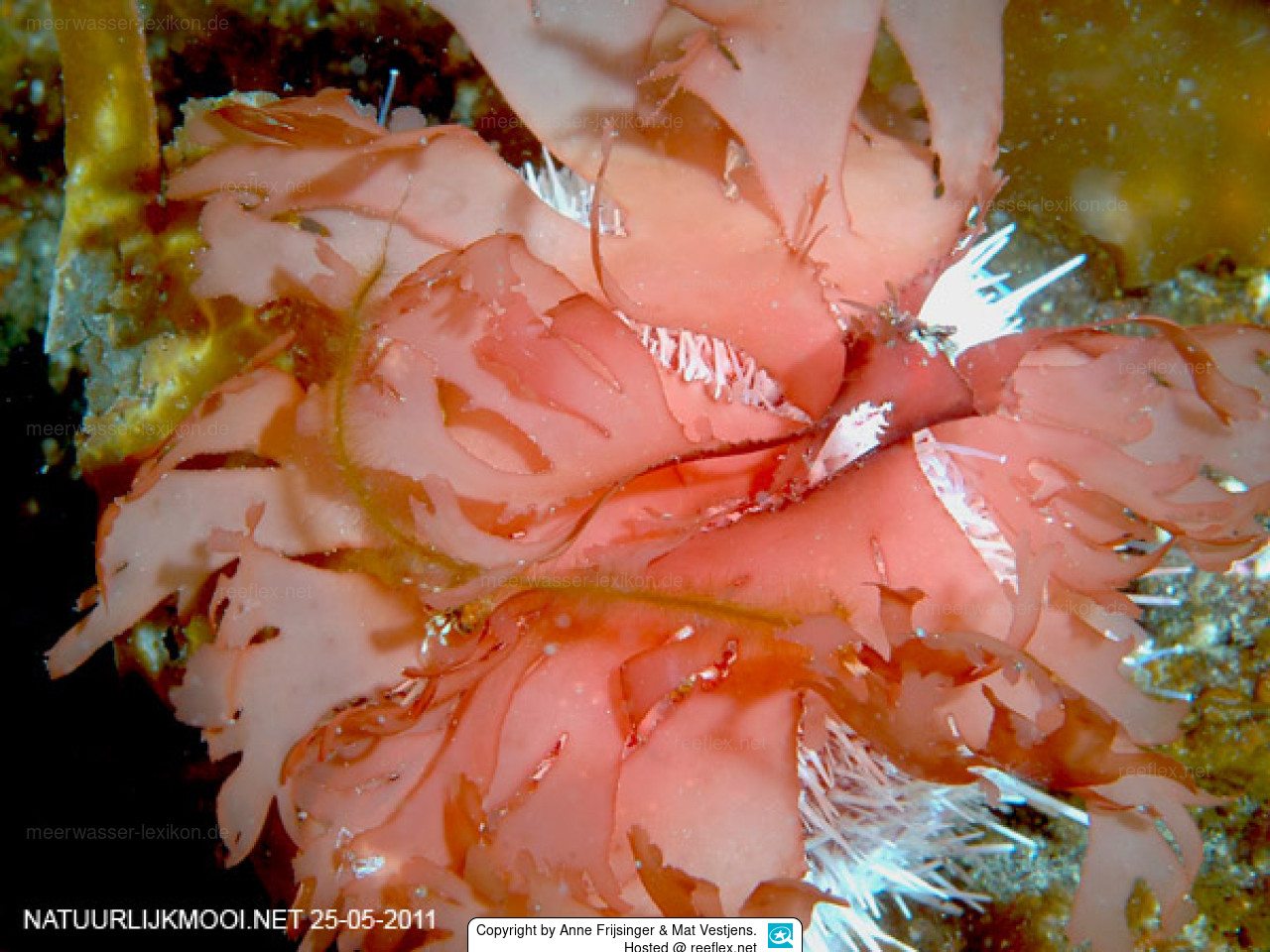Info
(Linnaeus) Weber & Mohr, 1805
Marine. On rock, mussels and epiphytic on several algae, intertidal (at all levels but particularly near low water) and shallow subtidal , especially on upper part of Laminaria hyperborea stipes (to a depth of 5 m), widely distributed, abundant. Undivided or sparingly divided forms occur on mussels on exposed shores and sometimes in the subtidal (to 20 m in exceptionally clear water); plants growing on exposed shores, known in Ireland as Creathnach, are considered to be more palatable than the leathery plants of the lower intertidal of semi-exposed shores, which are usually dried and sold as Dillisk or Dilleasc; these forms may ultimately prove to be a separate entity. A very finely dissected form grows epiphytically on rocks, pedbbles and Fucus serrratus in the sheltered parts of semi-exposed shores where silt or fine sand accumulates; this is sometimes known as the "var. sobolifera" or "var. sarniensis" and is much less common than the other forms.
Text source: Algaebase
Marine. On rock, mussels and epiphytic on several algae, intertidal (at all levels but particularly near low water) and shallow subtidal , especially on upper part of Laminaria hyperborea stipes (to a depth of 5 m), widely distributed, abundant. Undivided or sparingly divided forms occur on mussels on exposed shores and sometimes in the subtidal (to 20 m in exceptionally clear water); plants growing on exposed shores, known in Ireland as Creathnach, are considered to be more palatable than the leathery plants of the lower intertidal of semi-exposed shores, which are usually dried and sold as Dillisk or Dilleasc; these forms may ultimately prove to be a separate entity. A very finely dissected form grows epiphytically on rocks, pedbbles and Fucus serrratus in the sheltered parts of semi-exposed shores where silt or fine sand accumulates; this is sometimes known as the "var. sobolifera" or "var. sarniensis" and is much less common than the other forms.
Text source: Algaebase







 Anne Frijsinger & Mat Vestjens, Holland
Anne Frijsinger & Mat Vestjens, Holland

